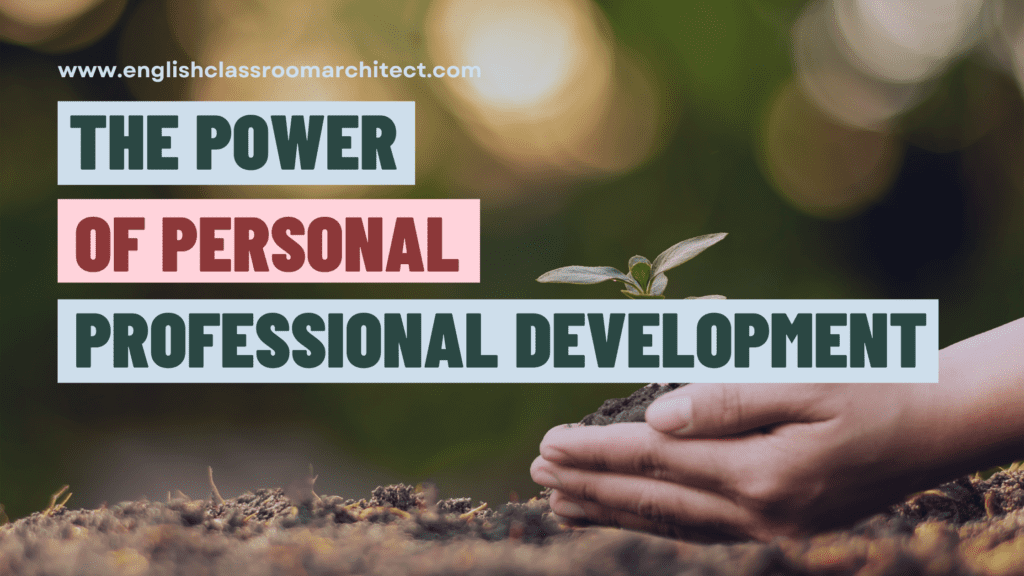As a dedicated sports coach and educator, I have always been a firm believer in the significance of both performance and process goals. The interplay between these two types of goals is a vital factor that contributes to the success of my athletes and students alike. Over the years, I have come to realize that process goals play a pivotal role in providing the clarity and direction needed to achieve our desired performance outcomes. I apply same philosophy to personal professional development.
When working with my track athletes, for instance, setting a performance goal to improve their time in the 300 hurdles is just the beginning. While it is essential to have a specific target, it is equally important to identify the steps and strategies that will lead to success.
The same principle applies to teaching; aspiring to be a “better teacher” without specific strategies and markers can lead to frustration, as we often become our own harshest critics. Hence, a process-oriented approach to professional development becomes invaluable.
In this blog post, I will delve into the power of process goals and their benefits in contrast to traditional numbers-oriented SMARTR goals. By embracing process goals and adopting a growth mindset, educators can open the door to continuous improvement, professional learning, and the cultivation of a supportive network.

Table of Contents
Contrasting Process Goals with Traditional Numbers-Oriented SMART Goals
Perhaps you are in a district like mine and you are encouraged to come up with SMARTR goals for your personal and team goals. For me, our district dictates these should be tied to student success.
While on one hand, this makes a lot of sense as our goal is to improve the performance of students as it relates to standards. The problem, especially for us as English teachers, is students have been learning to read, write, and communicate well before they enter our classroom.
A student’s success can be attributed to myriad factors, only some that come from a student’s current teacher. Numbers-oriented student outcome SMARTR goals have their place, but not meeting them can be frustrating and demoralizing, especially when we believe we have done everything we could to meet the goal.
Benefits of Adopting Process Goals for Personal Professional Development
The beauty of a process goal is the nexus of control. When setting a goal in this way teachers can be more exploratory and focus on improving their craft and the art of their teaching.
For instance, a goal might be to improve facilitation of whole class discussion. Steps towards this may be increasing frequency of these discussions so there are more opportunities to practice and improve, testing different types of questions and how much of the discussion is student-led, and trying a variety of formats for discussion.
Some additional examples include:
- Enhancing feedback and assessment techniques
- Developing strategies for fostering critical thinking in classroom discussions
- Integrating technology effectively into lesson plans
After each attempt towards the goal, teachers can reflect and determine next steps for improvement. This mindset around goal-setting encourages continuous improvement and allows space for adaptability and learning from challenges.
Embracing process goals for personal professional development is a transformative approach that puts the teacher in control of their growth journey. By setting exploratory goals and continuously refining their craft, teachers can create a positive and adaptive learning environment.
Embrace Growth Mindset Strategies
Many of us encourage a growth mindset in our students, but we do but give ourselves the same allowances.
As we encourage a growth mindset in our students, it’s equally vital to apply the same mindset to ourselves. Embracing challenges, seeing setbacks as opportunities for learning, and fostering a culture of self-reflection and collaboration with colleagues can invigorate our passion for teaching and reignite the flame of inspiration.
Growth mindset stages complements process goals:
- Give yourself a challenging goal, one you would actually like to work for
- Embrace challenges as opportunities for growth
- Focus on continuous growth
- See setbacks and failures as opportunities for improvement and learning
- Embrace self-reflection and open dialogue with colleagues
Emphasizing Learning in Personal Professional Development
I’m not talking about those required PD sessions that are dumped on us at the beginning of the year. You are the one that is in your classroom each day and best know the areas you most want to improve.
For teachers that have been at it for several years, it’s possible to lose that spark or seeing it slowly diminish each year. Self-directed, continuous learning in the teaching profession can serve as flint to reignite the passionate fire for teaching.
How much time you devote is up to you:
- Attend workshops, webinars, and conferences
- Engage in peer discussions and sharing experiences
- Integrate new teaching methodologies regularly
Cultivating a Supportive Network
A key to happiness in the profession is finding and cultivating support. What support looks like from teacher to teacher will vary, but it is important to build a network of like-minded educators.
This could take the form of something formal, like peer coaching and feedback, it could be dropping in to support and observe a colleague, or it could be regularly debriefing with a trusted colleague.
Building a supportive network is another essential aspect of our journey as educators. Cultivating relationships with like-minded colleagues can offer invaluable support, motivation, and fresh perspectives. Thanks to the digital age, networking is not confined to our immediate surroundings; we can connect with educators from around the world through online platforms, finding our group and fostering meaningful connections.
Whether you believe that social media is making us more social or anti-social, many are able to find their pocket of the Internet that fits their personality and quirks and leads to connection.
Put out to the universe what you would like to (or would have liked to) receive and seek out and become a mentor, either in formal or organic ways.
Conclusion
In the pursuit of excellence, both in sports and in teaching, the power of process goals should never be underestimated. As a sports coach, I have seen firsthand how the combination of performance and process goals can lead to remarkable achievements. The process goal acts as a guiding light, illuminating the path to reaching the desired performance goal.
Process goals offer us a powerful tool to drive continuous improvement, foster a growth mindset, emphasize professional learning, and build supportive networks. By embracing the process, we can elevate our teaching practice and, in turn, inspire and empower our students to reach their full potential.

